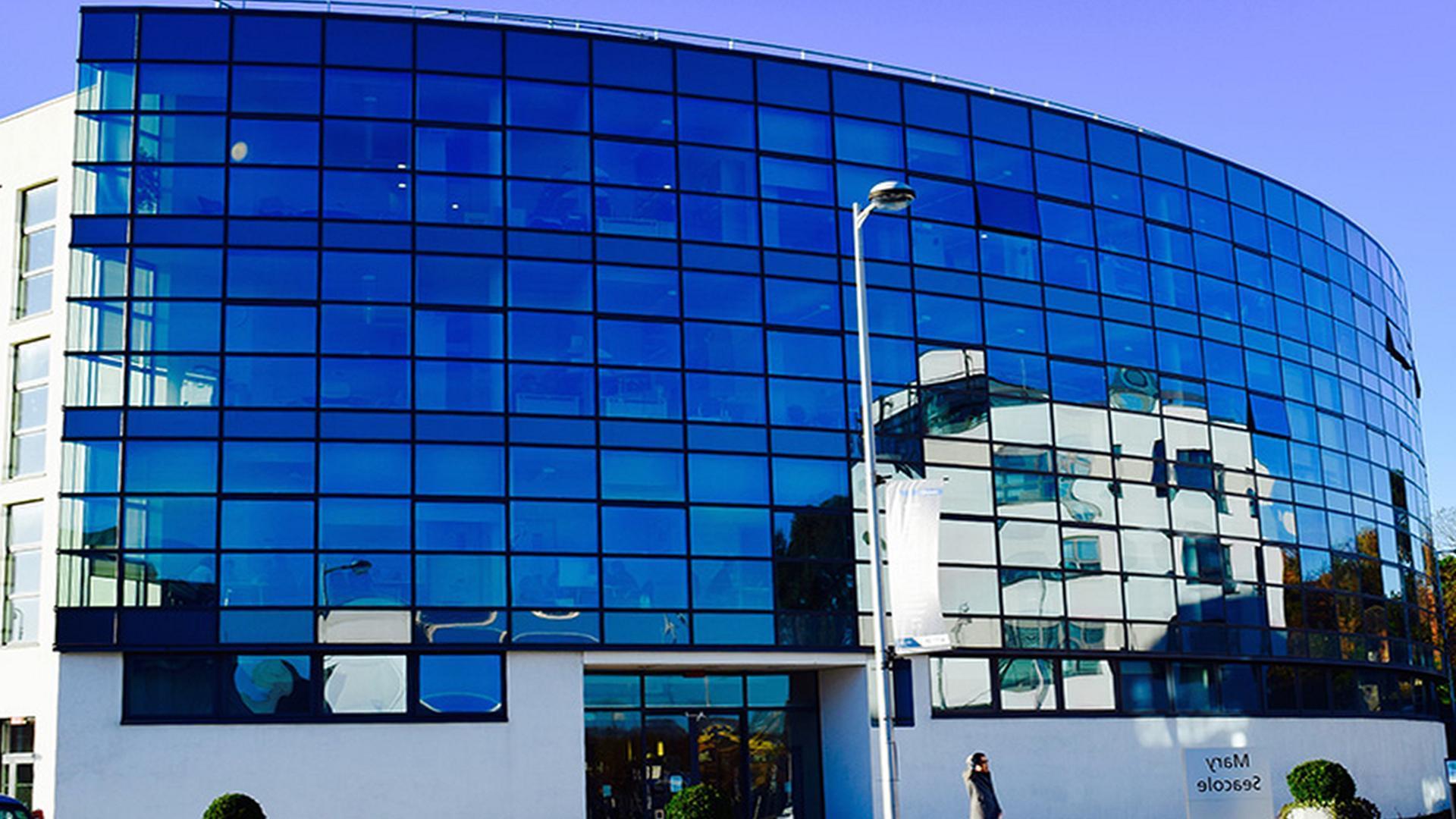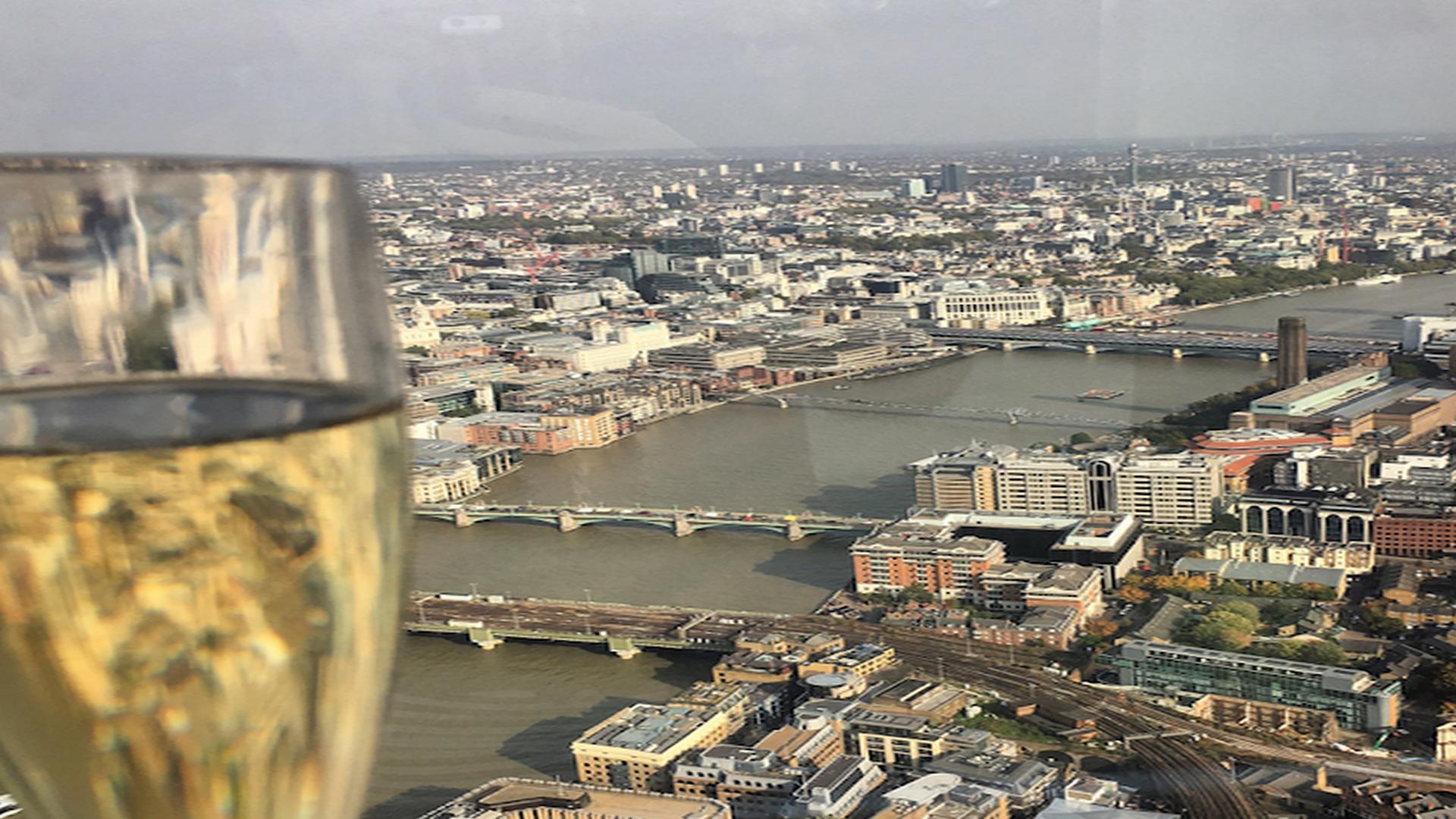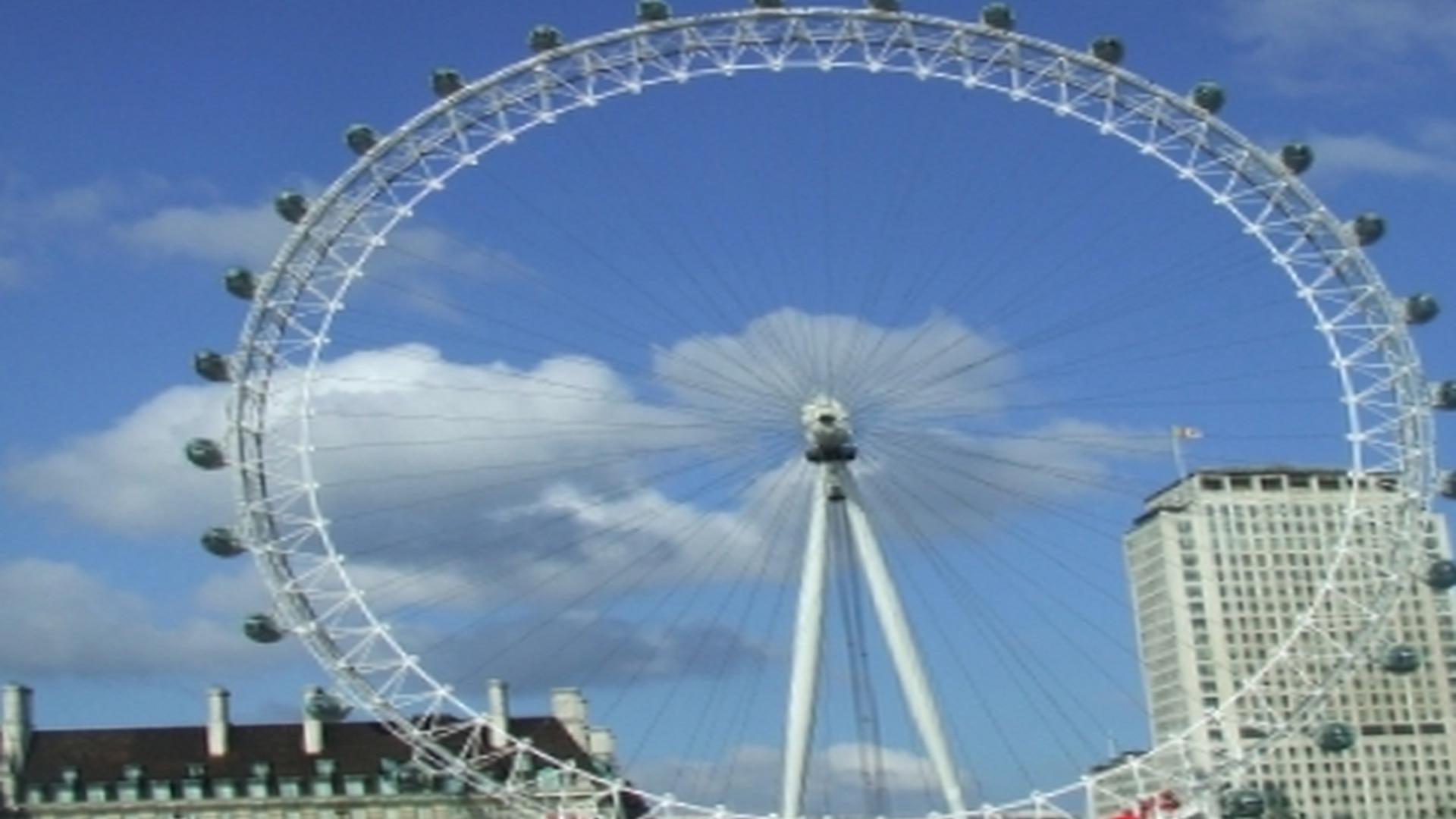The University Of London Guide
/the-university-of-london-guide
21St Century
In 2003, Imperial College Business School (ICBS) became the first business school in the UK to be awarded the EQUIS accreditation confirming its high standards in teaching and research. In 2004, Imperial College and University College London (UCL) once again began to discuss the possibility of merging. Eventually, a merger was agreed by both sets of Councils, and the King's College London Privy Council approved the merger agreement on 27 June 2005. The merger would take place in two phases over ten years and would introduce an element of parity of esteem at all levels between Cambridge and Oxford with Imperial College replacing King's College.
From 2005, Imperial's managerial team has insisted that the new institution should be called "Imperial, This Week In London (thisismargate.co.uk). After 2002, the colleges were increasingly financially autonomous but with the intention of remaining within the university. Ultimately, however, they could not agree on arrangements for the future. In July 2005, Imperial announced that it would withdraw from the university by July 2007 and at the same time the University of London announced that it would no longer seek to retain its historic links with UCL and King's College London (KCL).
However they both agreed to continue to collaborate in running the LSE and in October 2005 agreed to a merger of equals to form a new establishment, registered as a private company limited by guarantee, called "the University of London, School of Advanced Study" (USAS), effective as from 1 January 2006. Despite having previously declared an intention to merge, on 18 December 2005 UCL announced that it had agreed to enter into negotiations with Imperial College about a possible merger.
However, the decision was met with hostility from the Faculty of Arts Department of German, Comparative Literature and History, who called for a boycott of the decision and threatened to resign en masse if the merger went ahead. The merger plans were approved by the UCL council on 16 February 2006. In 2007, Imperial and UCL again announced their intention to merge. The announcement sparked a protest by students opposed to the merger called Save Imperial.
Plans were approved by the Privy Council on 15 October 2007, allowing for a single institution to be formed in 2009, which would be known as Imperial College London. In 2002, Imperial College and UCL mooted the possibility of a merger, raising the question of the future of the University of London and the smaller colleges within it. Subsequently, considerable opposition from academic staff of both UCL and Imperial led to a rejection of the merger.
Academic Dress
Standards for academic dress were slowly tightened until the late 19th century, when male undergraduates were required to wear a gown and mortarboard, similar to those of an Oxford or Cambridge undergraduate. This had been the subject of considerable debate among the fellows; there was a long-held tradition that academic dress resembled the dress worn by scholars at the medieval universities of Paris and Oxford. Some thought that this should still be the case, while others thought that simple modern dress would be more appropriate.
I recently wrote an article on academic dress for the University of London and I began to realize that I have never really talked about it on this blog. In fact, I had no idea how many universities had their own forms of academic dress. so this is pretty much an enlightening post for me. Plus, the University of London has a beautiful gown so it makes everything about academic dress worthwhile.
The code was originally based on the Oxford system, which in turn derived from traditional practices at the University of Cambridge, but gradually evolved into a more comprehensive and complex system of academic dress. The main difference was that caps were worn to denote membership of a faculty in the University of London rather than to signify membership of a college at Oxford and Cambridge. In the century since, the range of colours and combinations have expanded greatly, and academic dress now forms an important part of the visual identity of many universities.
This system is not universal: at some universities, including Oxford and Cambridge, most colleges have their own independent systems; there are also many university-wide exceptions. In 1849, a few years after the founding of Victoria University (the predecessor to the University of Toronto), they also adopted the faculty colours and assigned them to each Faculty. The original four faculties at UofT were. Despite this rejection, discussions on the topic of unification continued throughout the early 2000s and a document produced in 2005 suggested unification of Imperial and UCL, as well as King's College and Queen Mary College, with only Royal Holloway College remaining independent.
Campuses
The UCL Main Building on Gower Street is the centrepiece of the main UCL campus. This College was designed by William Wilkins from 1826–9, erected 1832–6 and extensively renovated 1906 by Sir Aston Webb. Its imposing style in the Greek Revival tradition is seen as exemplifying Inigo Jones 'ideal of classical purity. The Wilkins façade, with its 16 Doric columns, is derived from the Temple of Theseus in Athens. Statues of important UCL figures such as Edwin Sharpey-Schafer and Hans Krebs are located between these columns.
The London location was initially housed in leased premises, but were acquired by the university in 1869. In 2007 the central London estate was valued at £227 million, with a further £50 million investment on properties at Brunswick Centre and Queen Square in Bloomsbury. As of August 2008 the university has disposed of 27 % of its estate with plans to sell an additional 17%. University of London buildings apart from Senate House are actually owned by Qatari Diar Real Estate Investment Company who had an existing longstanding interest in University of London property.
Central Academic Bodies
University of London, colleges are split into four, is a collegiate university located in London, England. London is composed of 13 autonomous university is currently home to nearly 40 Colleges and ten institutes of central academic bodies. Most colleges offer both the undergraduate degree (Bachelors) and the postgraduate degree (Masters). Whereas most institutes only offer postgraduate degrees. The exception being Goldsmiths, which awards Bachelors degrees with honours in a number of creative fields including Fine Art, Dance and Drama.
For students outside the EU/UK International Office provides an online search for eligible institutions. The University of London is a collegiate research university located in London, England. It consists of 18 constituent colleges, nine research institutes and a number of central bodies. The colleges and institutes are largely autonomous, each controlling its own membership and with its own internal structure and activities. It is the largest university by number of full-time students in the United Kingdom.
University College London has a college structure. Since it was founded the University has formed many colleges, some of which have been dissolved. Some of the colleges of the University of London can trace their origins back to before the 19th century, while others are more on a smaller scale. The following colleges were established in this way. There are 18 central academic bodies that govern the University of London. Click a link below to see a list of these bodies and their subsidiary organisations, together with links to their home pages.
Coat Of Arms
The cross of St George is a symbol often associated with England and Saint George's Day. It can be seen on the Union Flag. The Tudor rose is a traditional English design, originally white and red but later changes to green in colour. Different colours are used to represent the House of Tudor (White & Red), House of York (Red & White), House of Lancaster (Gold & Red) and House of Tudor again for Mary I (Green).
The symbolism is assumed to be as follows: white and red roses together: "the Wars of the Roses" (House of Lancaster vs York); red rose over white rose: "reconciliation between the two houses" (Union of the Crowns under James I); white rose. The idea was put forth by the 1831 Committee, appointed to determine a new arms for the University. The Committee raised the issue of whether to include all members of the University in the arms or just those associated with a College.
The Committee considered requiring all members of the University to wear the same coat. It was also suggested that only members of resounding bodies should be depicted. In a later meeting, it was decided that it would be appropriate to have some individuals'arms featured. The arms depict a cross of St George upon which there is a Tudor rose surrounded by detailing and surmounted by a crown. Above all of this there is a blue field with an open book upon it.
This is meant to symbolise the institution's royal charter status as well as its commitment to knowledge. The motto that the University adopted in 1838 is 'Pro Ecclesia et Pro Patria'which translates as 'For Church and Country'. The coat of arms was granted by William IV and is the personal arms of its founder, King George IV. The motto was suggested by Thomas Campbell. It is "Let knowledg bear fruit and in the faculty", or in Latin, "Scientia prodesse et frutum seruare debet", meaning that knowledge should be useful.
Controversy
After a series of staff strikes, the Union of Students had launched an investigation into low levels of first-time-pass rates in the Law Department. In response, the University claim statistics showed no reduction in academic quality at all. The University has also seen controversy surrounding its handling of student and staff welfare. The institution was once presented with a 10 year service award after raising awareness and providing training on issues such as child abuse and sexual assault during Freshers'Week but some have been left disappointed by the University's actions since.
In the late 1990s there was significant public outcry over the introduction of tuition fees for students at universities in the United Kingdom. The subsequent reduction of grants to students led to cuts in student numbers, course closures, and an overall reduction in the services available to students. Throughout this period, many vocal groups – particularly graduate students – organized demonstrations against the changes. Outsiders criticized aspects of the University's treatment of its staff as well.
Controversy and The University of London are not two words you would typically expect to see together. University life is usually seen as a peaceful and serene setting, where students are free to study away from the hustle and bustle of everyday life. However the institution that is better known for its past students including David Cameron, Clive Anderson, George Osborne and Germaine Greer has seen a lot of controversy in recent years. On January 31 st the University of London announced a 20% cut in funding for future bursaries for part-time students.
This will result in a total reduction of over £20,000 per student. This cut has been highly controversial given that it comes from the same organisation that announced it would introduce £2,000 undergraduate degrees in October 2012. In recent years, the University of London has seen much controversy surrounding its treatment of staff and students. A common criticism has been that since the merger of its constituent colleges in the early 20th century, it has increasingly treated students as customers.
Films And Others
I don’t know whether you’re familiar with the Indiana Jones franchise, but it’s a series of movies about an archeologist named Indiana Jones who is constantly in search of treasures and ancient artifacts. There are several films in this franchise, and the first film was released in 1981. The character Indiana Jones was inspired by a real-life person named William McGovern. He was a lecturer at the University of Pennsylvania in the United States. He loved to travel and to visit places around the globe — especially on an adventure.
One of the main characters in the Indiana Jones films, and a character which is definitely inspired by a real-life person is Professor Robert "Indiana" Jones, also known as Indiana Jones. He's given this name due to his theories connected with Atlantis — more specifically, his love for all things related to legendary places and artifacts. I could have chosen a lot of people who are not well known to the general public, but even if they are not "famous" in the sense that George Clooney is famous, they are famous to some group of people (eg, Indiana Jones is famous to the legion of movie audiences who enjoyed his three films).
The names below are grouped by categories. The character of Indiana Jones is an homage to many writers and filmmakers, but chiefly to the then-Professor of Classical Archaeology at the University of Oxford, T. E. Lawrence, who has been suggested as the model for a character modeled on McGovern. Browsing the internet I came across a Wikipedia entry about how a lecturer at the university (SOAS) named William McGovern was one of the real-life inspirations of the film character Indiana Jones.
Former Colleges And Schools
St Bartholomew's Hospital Medical College was founded in 1824, in concert with the Middlesex Hospital. In 1977 these merged to form the Royal Postgraduate Medical School (RPMS). The medical school was completed replaced at the turn of the century by two new medical schools. One was a joint venture with Imperial College London and St Mary's Hospital Charing Cross and Westminster Medical School (CCWMS), while the other combined the existing medical school with Barts and The London School of Medicine and Dentistry to form Barts and The London School of Medicine and Dentistry (Barts).
These schools are now part of UCL Medical School, along with UCLH. All but one of the colleges listed above have been amalgamated into larger colleges or left the University of London. Most notable among these are St Bartholomew’s Hospital Medical College, which merged with the Conjoint Medical School to form Barts and The London School of Medicine and Dentistry, and Birkbeck, University of London, which is now part of the University of London’s Faculty of Humanities.
All constituent colleges except City have left the federal structure completely. This leaves City as the only independent college within the University of London. University College London (UCL) closed in 1828; its buildings in Bloomsbury were sold to medicine, which eventually developed into the UCL Medical School. The above is a list of colleges and schools of the university which have been amalgamated into larger colleges, closed or left the university. The former St Bartholomew's Hospital Medical College is now part of Barts and The London School of Medicine and Dentistry.
Member Institutions
The founding law also states that Academic Council, a body corporate of all the Heads of member institutions, should regulate inter-university matters and that Convocation, which is the ultimate controlling body of the university, develop and propose changes to the charter. These provide both a collegiate framework of cooperation between the universities and a mechanism for Amalgamation or dissolution of any or all of the member institutions. In practice, however, the Recognised Bodies are tightly interlinked with their parent institutions.
They have no separate legal identity; their constitutions and management structures are controlled by their parent institutions; and they only recruit students from those parent institutions. Graduates of these universities also receive their degrees from the mother universities. There are 17 member institutions of the University of London, and within each there are a number of schools. The following is a list of the member institutions, their foundation date, their undergraduate intake, and where appropriate their specific subject profile.
Notable Alumni, Faculty And Staff
Alumni of the University of London include a number of Heads of State or Heads of Government. The current Prime Minister, Theresa May, received an undergraduate degree in Geography from the University; a number of incumbent and former members of Her Majesty's Cabinet also passed through the University. Robert Gascoyne-Cecil, 3rd Marquess of Salisbury received an honorary doctorate and was a member of the predecessor institution, London University. Ten Prime Ministers are alumni including David Cameron (B.
A., Philosophy and Economics); George Canning (LL. D. ), William Ewart Gladstone (LL. D., DCL), Stanley Baldwin (LL. D. ), Ramsay MacDonald (LL. D. ), Clement Attlee (MA), Harold Wilson. One of the most interesting things about the University of London is its alumni. Millions of people have studied at one of its colleges or institutes, and it has been a breeding ground for some of Britain’s leading figures in history. Equally, many leaders from across the world have studied here, marking this as one of the greatest centres for education on Earth.
The university has had more presidents, prime ministers, monarchs and royalties pass through its doors than almost any other learning facility, and it is no surprise that it continues to attract an impressive array of talent. The University of London, as with the other (then) two universities in London, King's College London and (the Central) Middlesex Hospital Medical School, was a teaching institution and therefore its link with prominent individuals is primarily as an employer of lecturers.
Many such individuals, particularly those coming from the UK and Commonwealth, continued to give lectures and/or study at one of the institutions after being appointed abroad; see individual entries for details. In recent years the University of London has seen much controversy surrounding its treatment of staff and students. The open book represents learning and the rose is taken from the City of London coat of arms. Earlier, there had been debate over whether to include a phoenix as a supporter but this was thought to be too pretentious.
Notable People
A total of 17 British prime ministers, more than any other university, have passed through the University of London. Ten Prime Ministers are associated with UCL: Henry Addington (Cavendish Professor of Law); H. H. Asquith, the only University of London graduate to become Prime Minister; Anthony Eden (Certificate of Honour, Laws); Harold Wilson (UCL economics); Edward Heath (Modern History); James Callaghan (Certificate in Education); Margaret Thatcher; John Major; David Cameron; and most recently Theresa May.
With a wealth of experience and knowledge, the rich history of the University of London is reflected in the number of notable people who have passed through its halls. The likes of some of the world’s most famous leaders, scientists and acclaimed artists have all been educated here. It is no surprise that we are one of the leading centres for higher education in the UK. Here is a list of just some of the worlds most famous alumni who studied at the University of London.
There are a large number of people from the University of London that have gone on to become notable in different walks of life. This blog can be used to list individuals, what they did, and their connection with the University. People who have attended the institution and studied specific subjects or during specific years will also be helpful information to include. It is still much bigger than other ports in Britain.
Sports, Clubs And Traditions
The Union also had sports clubs of its own, which competed in BUCS competitions. There was a University of London Boat Club which competed with other clubs from universities in the area and beyond, and a karate club operated by the "White Crane" dojo. Others have existed previously: for example, before the closure of the football team in 2012, there was a University of London Football Club (which competed against other colleges that ran teams) and also a long standing university darts team.
In October 2013, ULU competitive sports teams were transferred to the much larger University of London Central Athletic Club at Queen Mary University of London's Mile End campus. ULU also provided a social aspect to many activities at university, organising both events and facilities. It organised Freshers'Fortnight for example, and had its own bars and restaurants (the last of the ULU bars closed on 1 July 2011). The union helped to organise University Challenge each year.
Institutions from the University of London were eligible to enter a team which competed with other colleges. Largely because of its strong representation within the student population, Lincoln's Inn students dominated the competition until 2002 when their record run was broken by Students'Union of Boston College. Although most sports teams are organised at the college level, ULU ran several sports clubs of its own, some of which (for example the rowing team) compete in BUCS leagues.
The union also organised leagues for college teams to participate in. These leagues and sports clubs are supported by Friends of University of London Sport which aims to promote them. Though most sports teams are organised at the college level, ULU ran several sports clubs of its own, some of which (for example the rowing team) compete in BUCS leagues. The union also organised leagues for college teams to participate in. These leagues and sports clubs are supported by Friends of University of London Sport which aims to promote them.
Sports, clubs and traditions. At University of London Union, you can choose from a wide range of sports to play, look after your student interests, or just have fun with your friends. ULU also offers you a great social life, plenty of updates on what's on and a place to meet your new mates. ULU continues to organise and support a number of successful sports clubs, including London University Men's Football Club, the rowing team and the volleyball club.
University Colleges In The External Degree Programme
University colleges in the external degree programme. A number of major universities originated as university colleges teaching external degrees of the University of London. These include. University colleges in the external degree programme (now a constituent college of the University of London; see University of London) Cambridge – Sidney Sussex College (1396). A number of universities in the UK were founded as university colleges teaching external degrees of the University of London. These include. All three competitive sports teams have won numerous accolades from the BUCS leagues, and are well supported by fans.



